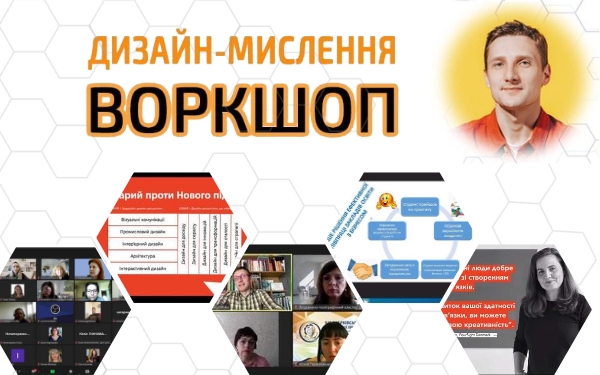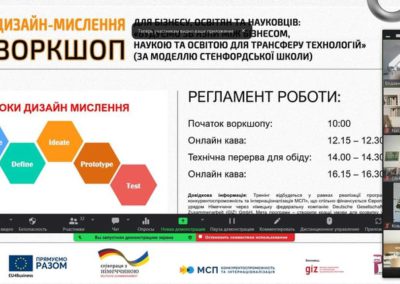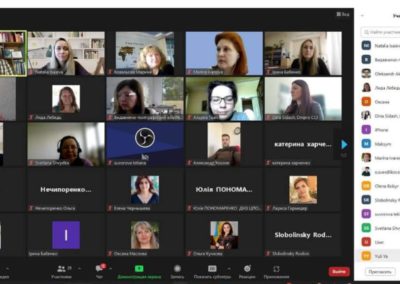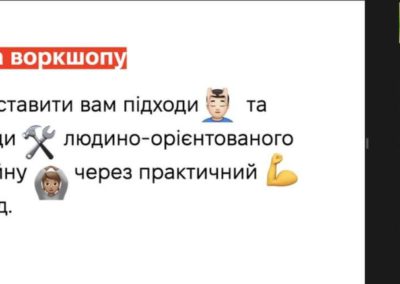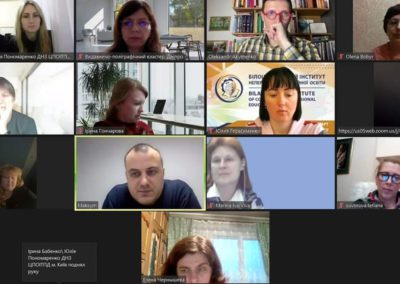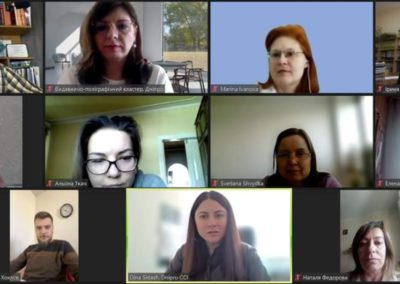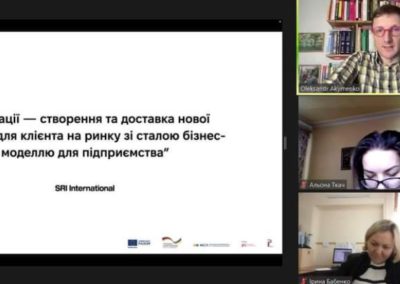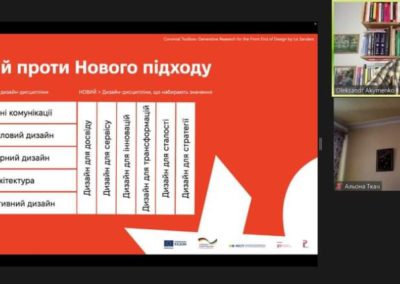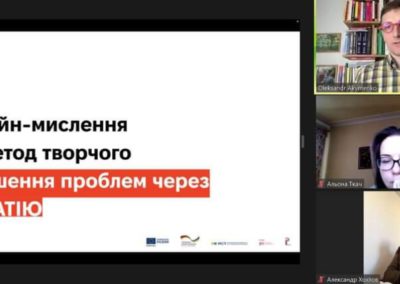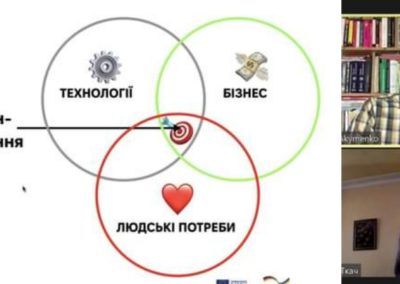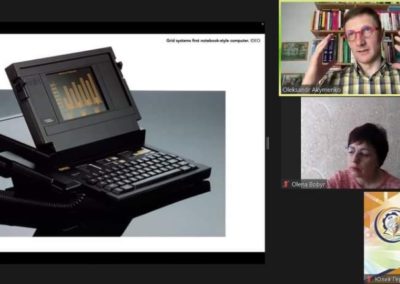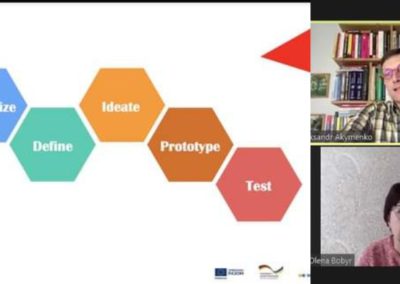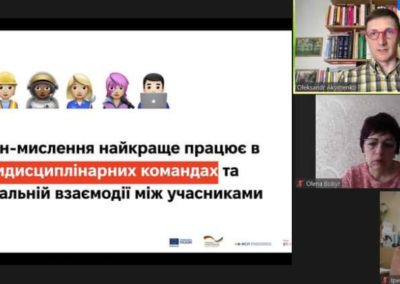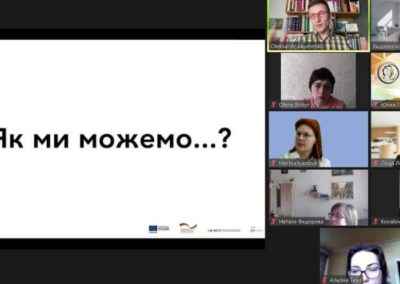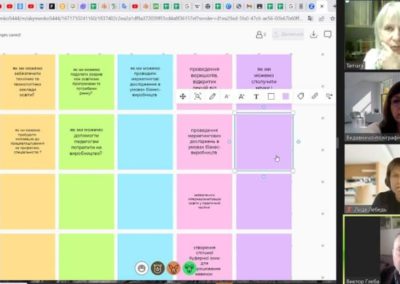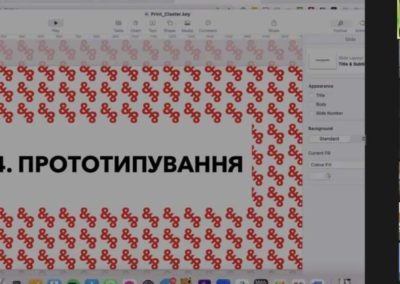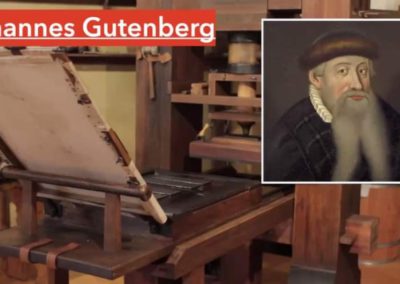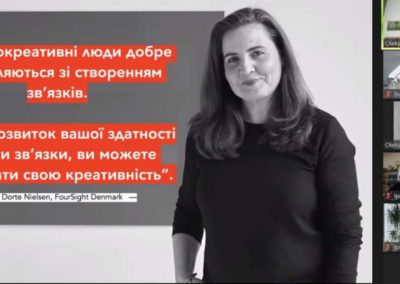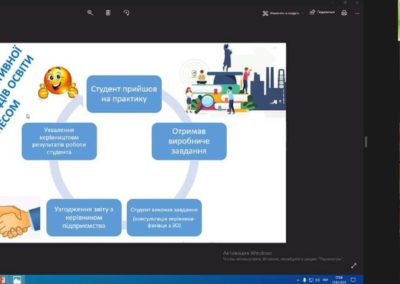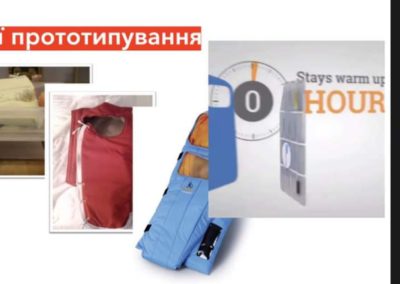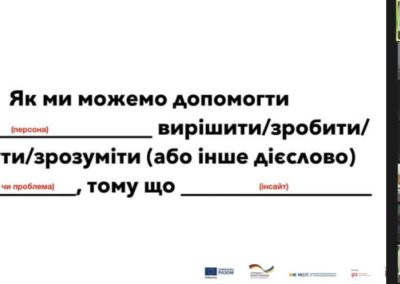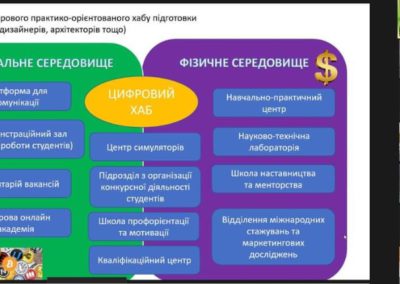Workshop on design thinking: new methods, techniques, innovative solutions
March 13, 2023 as part of the implementation of the program “EU4Business: competitiveness and internationalization of SMEs”, which is jointly financed by the European Union and the German government through the German federal company Deutsche Gesellschaft für Internationale Zusammenarbeit ( GIZ) GmbH held a design-thinking workshop: “Building connections between business, science and education for technology transfer” for participants of the Cluster of printing industry, publishing houses and digital technologies “Printing: logistics, service, quality” and its partners.
The organizer of the event was the Cluster of the printing industry, publishing houses and digital technologies “Printing: logistics, service, quality” (Natalia Isayeva, head of the Cluster, director of LLC “Publishing and Printing House” Format A+”) within the framework of the implementation of project tasks: Innovative industrial site “Professional Alternative Dnipro”.
The facilitator of the workshop is Olexandr Akymenko, a teacher at the Lviv Business School (LvBS) of UCU, a member of the academic council and head of the master’s program MSc in Innovations and Entrepreneurship. Entrepreneur, consultant and teacher.
During the workshop there were up to 50 connection points (participants were involved in the event on the basis of competitive selection: motivation for development + desire to complete the full cycle of the workshop). Active work was organized in 6 teams with all stages of design thinking.
Business participants of the cluster (VPD “FORMAT A+” LLP, Metal Print LLP, Ukraine Typography LLP strong>, Vesna Production and Printing Complex LLP, Royal Print LLP, GO “Association of Restaurateurs and Hoteliers of Dnipro” , Dnipropetrovsk Chamber of Commerce and Industry and a number of FOP members) sent specialists responsible for development and innovation to the event, and scientists at the event were represented by powerful institutions of higher education of Ukraine: Ukrainian State Chemical and Technological University< /strong>, Bilotserk Institute of Continuing Professional Education, Dnieper Academy of Construction and Architecture; from the professional technical staff of Ukraine, an extremely effective team was presented by the teaching staff of the State educational institution “Center for Vocational Education of Information Technologies, Printing and Design of Kyiv”. The event was also attended by other representatives of various types of organizations and industries that potentially intend to join cluster activities.
Participants listened to meaningful lectures, and after working in teams created and presented prototypes of science-intensive products, services, and solutions. Together, they practiced a number of design thinking techniques and felt as if they had invested 8 hours of their time in self-development at an offline event.
The workshop program was built on the theoretical and practical basis of the Stanford University course on design thinking, as well as on the best practices of innovation implementation from Silicon Valley and other innovation centers. During the workshop, those present from business, education and science tried to solve the problems and challenges facing each target audience: they looked for insights, created products, services, innovative solutions and concepts for improving educational services.
Compilation of a map based on an improvised canvas became extremely exciting for all participants. Canva helped to lay out and convey complex ideas, and when the teams presented a variety of grid sheets of their innovative creativity, it became clear that there is enough creativity in cluster teams. Each team argued that their canvas was unique and the only “correct” one. Then, on the basis of four main blocks of content (stages, user actions, pain points, solution ideas), corresponding prototypes were generated. The participants filled the blocks with high-quality, concise and relevant content based on experience: goals (what users strive to achieve in general; strategic and ambitious); needs (what helps to achieve goals;) logically based, rational); pain points (things that prevent the achievement of goals; formulated in a negative format); wishes (related to people’s emotions; not necessarily rational).
The following exercises were used for this:
1. Notes: participants explored each other, pains, problems. The stages do not yet have a specific order or precision, but are aimed at finding ways to connect. To do this, they tried to answer the question “How can we solve this problem?”
2. Creating maps: the presenter and participants together organized the stages and filtered duplicates.
3. Debriefing: consideration of the names of the stages, then the participants wrote down what actions should be taken under the corresponding stages on Murali. Next, the Facilitator read aloud the pain points of representatives of various target audiences.
4. Voting: participants voted for the most critical problems of the selected user of the target audience.
5. Analysis: the presenter analyzed the pain points that received the most votes.
6. Notes: participants wrote down ideas for solving the most critical pain points and pasted notes in the corresponding stages.
7. Analysis of prototypes created by teams, protection of innovative ideas aimed at solving key problems at the intersection of technology transfer through science, education and the business environment.
8. Summary of work and completion of the entire session
Workshop participants explored all steps of design thinking together:
1. Empathy. The purpose of this step is to investigate the behavior of the end users of the product or service and synthesize the research results into powerful insights.
2. Definition. Understand and prioritize the main problems, pain points of customers to understand what exactly needs to be solved in the first place
3. Generation of ideas. Create a large number of solutions to the problems formulated in the previous step. Choose the most successful.
4. Prototyping. Turn your ideas into prototypes of real solutions. Use cheap and quick methods of idea validation with the target audience.
5. Testing. Get feedback on your prototype from real customers. Observe how they use your new product, conclusions.
6. Final presentation. To present to each other, to the top management, solutions that were worked out in teams, microgroups.
The dynamics of the teams’ work during the workshop resembled diamonds: during the workshop, the flow of information expanded and then narrowed several times. The canvas created by the teams helped to visually structure the information and combine the expertise and experience of all team members. Everyone present at the workshop tried to understand the users of the opposite target audiences as much as possible, to implement a comprehensive approach to identifying problems and focusing on innovative interaction scenarios and finding optimal partnership solutions.
We sincerely thank the European Union and the government of Germany through the German federal company Deutsche Gesellschaft für Internationale Zusammenarbeit (GIZ) GmbH for financial support in the development of various business processes in Ukraine in the context of crisis situations.
Background information: the workshop was held as part of the implementation of the program “EU4Business: competitiveness and internationalization of SMEs”, which is jointly financed by the European Union and the German government through the German federal company Deutsche Gesellschaft für Internationale Zusammenarbeit (GIZ) GmbH. The purpose of the program is to create better conditions for the development of Ukrainian small and medium-sized enterprises (SMEs), to support innovation and stimulate exports, which is the way to sustainable and uniform economic growth. EU4Business is an initiative of the European Union that helps small and medium-sized enterprises in the Eastern Partnership countries.
Details:www.eu4business.org.ua

